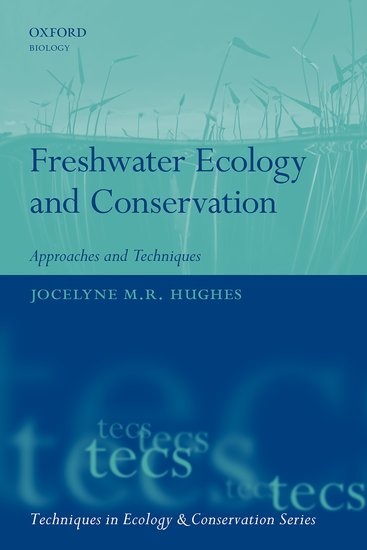This practical manual of freshwater ecology and conservation provides a state-of-the-art review of the approaches and techniques used to measure, monitor, and conserve freshwater ecosystems. It offers a single, comprehensive, and accessible synthesis of the vast amount of literature for freshwater ecology and conservation that is currently dispersed in manuals, toolkits, journals, handbooks, 'grey' literature, and websites. Successful conservation outcomes are ultimately built on a sound ecological framework in which every species must be assessed and understood at the individual, community, catchment and landscape level of interaction. For example, freshwater ecologists need to understand hydrochemical storages and fluxes, the physical systems influencing freshwaters at the catchment and landscape scale, and the spatial and temporal processes that maintain species assemblages and their dynamics. A thorough understanding of all these varied processes, and the techniques for studying them, is essential for the effective conservation and management of freshwater ecosystems.
Part I
Overall considerations
1:Diversity of freshwater ecosystems and global distributions, G. Randy Milton and C. Max Finlayson
2:Approaches to freshwater ecology and conservation, Rebecca E. Tharme, David Tickner, Jocelyne M.R. Hughes, John Conallin, and Lauren Zielinsky
3:Sampling strategies and protocols for freshwater ecology and conservation, Leon A. Barmuta
Part II
Measuring the component parts
4:Water quantity and hydrology, Matthew McCartney
5:Chemical determinands of freshwater ecosystem functioning, Nic Pacini, Libor Pechar, and David M. Harper
6:Physical variables in freshwater ecosystems, Curt Lamberth and Jocelyne Hughes
7:Microorganisms 1: Phytoplankton, attached algae, and biofilms, David C. Sigee
8:Microorganisms 2: Viruses, prokaryotes, fungi, protozoans, and microscopic metazoans, Julia Reiss
9:Wetland plants and aquatic macrophytes, Jocelyne Hughes, Beverley R. Clarkson, Ana T. Castro-Castellon, and Laura L. Hess
10:Freshwater vertebrates: An overview of survey design and key methodological considerations, Stephen E.W. Green, Rosie D. Salazar, Gillian Gilbert, Andrew S. Buxton, Danielle L. Gilroy, Thierry Oberdorff, and Lauren A. Harrington
11:Aquatic macroinvertebrates, Richard Marchant and Catherine M. Yule
Part III
Ecosystem dynamics, conservation, and management
12:Freshwater populations, interactions, and networks, David M. Harper and Nic Pacini
13:Changes over time, Peter A. Gell, Marie-Elodie Perga, and C. Max Finlayson
14:Secondary data: Taking advantage of existing data and improving data availability for supporting freshwater ecology research and biodiversity conservation, Aaike De Wever, Astrid Schmidt-Kloiber, Vanessa Bremerich, and Joerg Freyhof
15:Freshwater ecosystem services and functions, C. Max Finlayson, R. S. de Groot, Francine M. R. Hughes, and Caroline A. Sullivan
16:Invasive aquatic species, Julie A. Coetzee, Martin P. Hill, Andreas Hussner, Ana L. Nunes, and Olaf L. F. Weyl
17:Freshwater ecosystem security and climate change, Jamie Pittock, C. Max Finlayson, and Simon Linke
18:Restoration of freshwaters: Principles and practice, Carl Sayer, Helen Bennion, Angela Gurnell, Emma Goodyer, Donovan Kotze, and Richard Lindsay
19:Wetland landscapes and catchment management, Caroline A. Sullivan, C. Max Finlayson, Elizabeth Heagney, Marie Chantale Pelletier, Mike Acreman, and Jocelyne M.R. Hughes


















